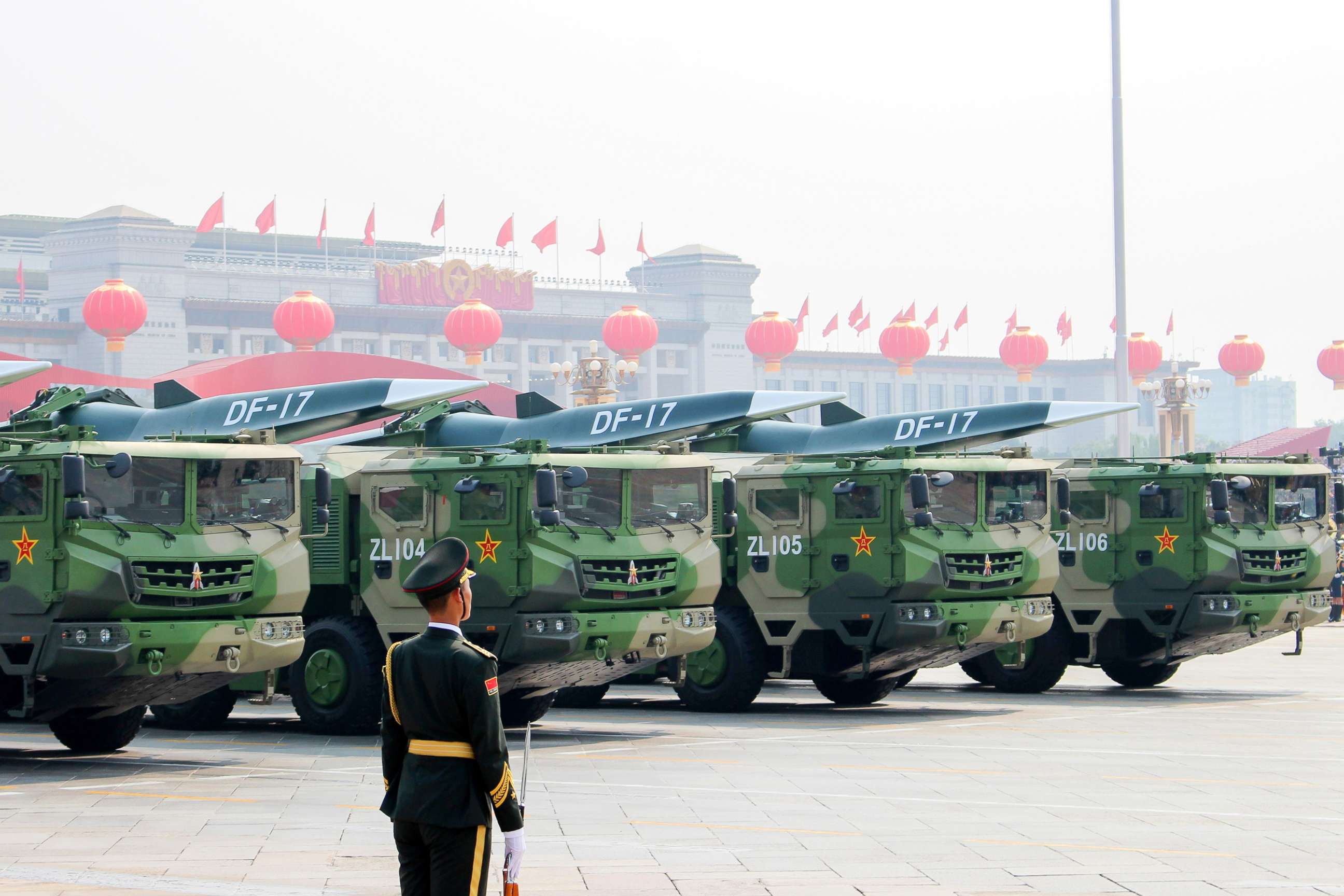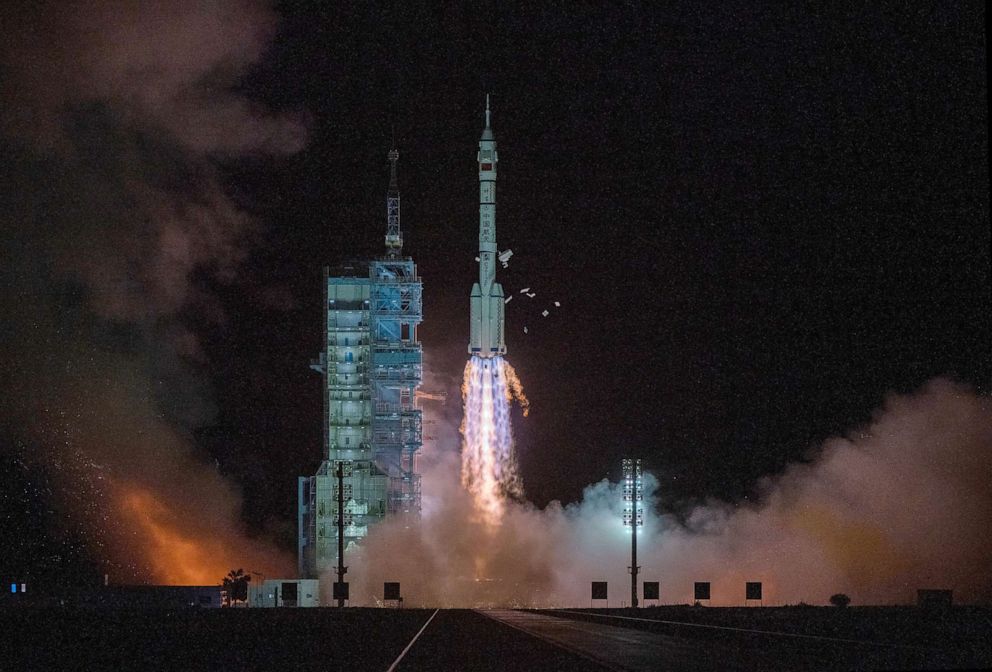China's reported hypersonic weapon test raises security concerns
"They now have a weapon ... we can't defend against," one expert said.
Reports that China may have tested a new hypersonic weapon have grabbed the world's attention and divided national security experts about its strategic significance and whether the U.S. was falling behind in a new arms race.
But it also raised basic questions about the new technology, what it all means, and what it is that China may have tested.
"The U.S. does not currently have the ability to even track this weapon, much less defeat it," said Steve Ganyard, a retired Marine colonel and ABC News contributor.
On Monday, China's foreign ministry denied a Financial Times report that it had tested a nuclear-capable hypersonic missile and instead claimed that it had conducted a "routine test" of a reusable space vehicle.

The newspaper cited five American officials who said China had launched a long-range rocket that deployed a hypersonic glide vehicle that circled the earth in a low orbit before returning to a target area in China, missing it by two dozen miles. ABC News has not independently confirmed the report.
The development raised the possibility of a new arms race for a concept and technology that few people have even heard of.
The idea is that gliders fitted atop ballistic missiles use the rocket's force to achieve hypersonic speeds, more than five times the speed of sound, as they glide and maneuver through the atmosphere for longer distances than ballistic missiles.
It is believed that because the gliders travel at lower altitudes than a warhead launched from an ICBM, current early warning systems would have a hard time tracking them as they head toward their targets.

They are also hard to track because the glide vehicles are maneuverable in the atmosphere, unlike ballistic warheads that follow a fixed trajectory, meaning they could weave their way around ground-based interceptor missile systems.
The U.S. has been developing its own hypersonic weapons programs, but both Russia and China have claimed technological advances that they say have made their programs already operational.
But China's test launch would be a significant step forward because a glider was placed into a low earth orbit and then reentered the atmosphere as it headed towards a target at hypersonic speed.
"What China tested was an orbital bombardment system," said Jeffrey Lewis, with the James Martin Center for Nonproliferation Studies. "The glider entered orbit and had to be brought back down with a de-orbit burn. It's not clear how much gliding it actually did."
Either way, the possibility of a new Chinese glider capability from space is raising concerns, particularly if it is capable of carrying a nuclear warhead and able to evade current missile defense systems.
"It will give the Chinese the ability to conduct a nuclear strike anywhere in the world without warning," said Ganyard.
"They now have a weapon that we don't have, we can't defend against, we can't even see. So, we are at a strategic disadvantage," he said. "And it is probably the first time since the end of World War Two, maybe 1945-46, that the U.S. has been at a strategic disadvantage to any other country. We are behind, and the Chinese have the edge."
Taylor Fravel, the Director of the Security Studies Program at the Massachusetts Institute of Technology, acknowledges that the new Chinese capability "does expose the limits of the U.S. missile defense system" designed to counter ballistic missiles from North Korea and Iran," but he does not see a new Chinese glide vehicle as destabilizing.
"Given the continued large gap in warhead stockpiles, whereby China possess only a fraction of those of the U.S. this particular test should not upset the U.S.-China nuclear balance or be destabilizing in that way," he told ABC News.
"However, it underscores China’s determination to strengthen its deterrent, especially as amid the steep decline in U.S.-China relations and long-standing concerns about missile defense," he added.
A nuclear military power since the 1960s, China is believed to maintain a small stockpile of at least 250 nuclear warheads, as well as a modest launch capability housed in dozens of missile silos.
Meanwhile, the United States has declared a stockpile of 3,750 warheads capable of being deployed by hundreds of land-based and sea-launched missiles and a strategic bomber fleet.
But recent open-sourced satellite images indicate that China is constructing more than 200 additional missile silos, an indication that it may be expanding its nuclear weapons capability.
In an interview with Stars and Stripes Adm. Charles Richard, the head of U.S. Strategic Command, declined to confirm the details of the Financial Times report but said “It almost seems like we can’t go through a month without some new revelation coming about China.”
“I am not surprised at reports like this. I won’t be surprised when another report comes next month,” he said, adding, the “breathtaking expansion of strategic and nuclear capabilities” means “China can now execute any possible nuclear employment strategy."
ABC News’ Matt Seyler contributed to this report.




